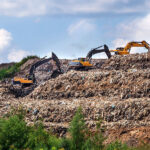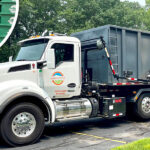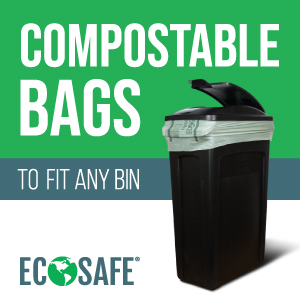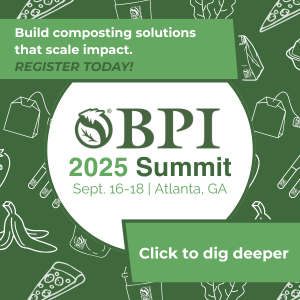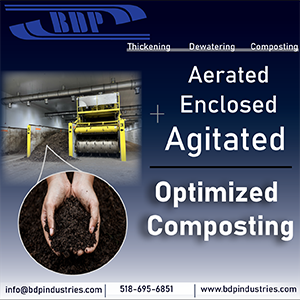Top: The Zero Waste dashboard tracks diversion over time in the City of Boulder. Graphic courtesy City of Boulder
The City of Boulder, Colorado passed a Zero Waste Resolution in 2006 with the goal of diverting 85% of waste from landfills by 2025. The resolution built upon an ordinance passed in 2001 requiring all trash haulers to provide curbside recycling services and adopt a Pay-As-You-Throw (PAYT) pricing structure to incentivize waste reduction. In 2015, a Universal Zero Waste Ordinance mandated separate collection services for recycling, food waste and yard trimmings, and trash for all residential and commercial properties. To track its progress towards achieving 85% waste diversion by 2025, the City of Boulder created a data dashboard that reports on the following metrics:
- Waste Diversion Rate: Percentage diverted from landfills to recycling and composting facilities
- Discard Rate: Percentage of contaminated recyclable or compostable material sent to landfills
- GHG Emissions Reduction: Measured in tons of reduced carbon dioxide, methane and nitrous oxide
- Financial Impacts: Savings from reduced landfill fees and material sales
Annual waste diversion is calculated by dividing the total diverted waste (recycled, composted and reused materials kept out of the landfill) by the total generated waste (diverted materials and landfilled materials). This statistic includes all four waste streams (trash, recycling, organics, reuse) and services including curbside collection, roll-off, construction and demolition (C&D), and drop-off centers. “Because data are self-reported and there are so many different wastes contributing to the annual waste diversion, the diversion rate can change significantly year to year, especially with contributions from things like construction and natural disasters that vary widely and unpredictably,” explains the city on its Zero Waste Diversion Data Dashboard webpage. “In 2019, in an effort to improve the accuracy of the data collected, the city implemented new data quality controls to analyze all hauler submitted waste reports. In doing so, errors were found and fixed, and new drop-off waste data was able to be integrated for the first time due to improved accuracy. While these more stringent data practices resulted in a lower diversion rate from prior years, the capturing of more and improved data provides us with a clearer more transparent indication of waste diversion in our community.”
Curbside collection diversion isolates waste discarded in dumpsters and carts and collected on a regular basis. Curbside collection does not include C&D, roll-off, drop-off center, or reuse waste. “Separating out curbside collection waste gives us a consistent representation of what the community is throwing out and is a useful statistic for tracking our community behavior in correlation with the Universal Zero Waste Ordinance,” notes the city. As of 2024, Boulder diverts 56% of its municipal waste.



